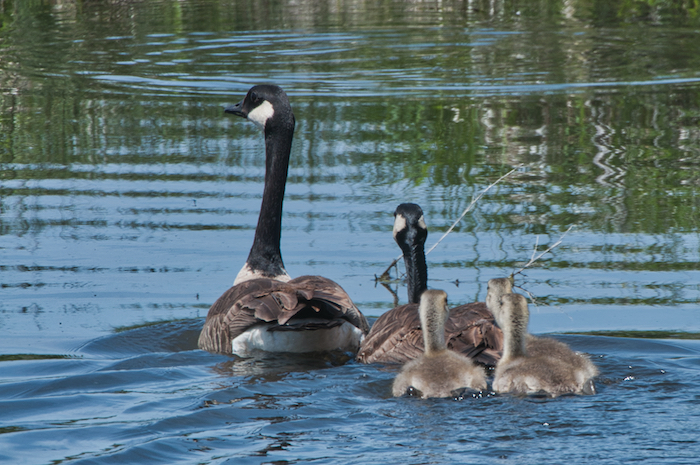
Canada Goose with Young
The number of Canada Geese inhabiting the Sacramento River area as well as ponds and lakes in the northern Sacramento Valley seems to be increasing every year. The California Department of Fish and Wildlife affirms this with both aerial and ground counts of the species each year. Increased food supplies from grain and rice fields seem to surpass nutrients the geese can find farther south. Large lawns and golf courses are another attractant.
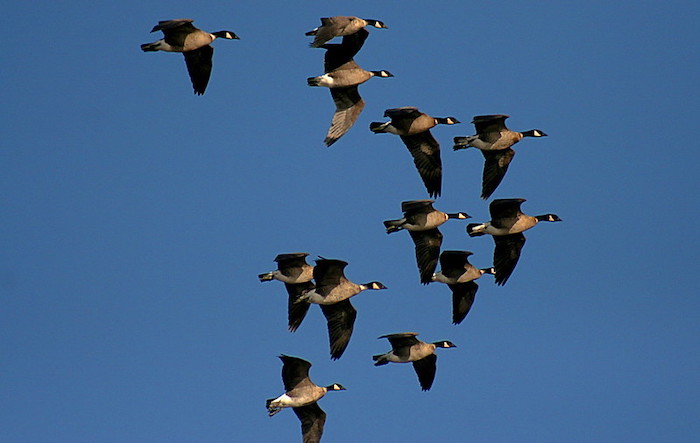
Canada Geese In Flight
The consistent “V-shaped” flying formations and lilting chatter of the Canada Goose is familiar to most northern California residents. Some people call these waterfowl “HONKERS” due to these vocalizations. The large size and distinctive plumage of these geese with black heads and necks and a bold white cheek patch combined with gray brown bodies and white feathers under their tails make them easy to identify. Their wingspans range from 43 to 60 inches, varying among subspecies. Some researchers estimate 4 total Canada Goose subspecies while others estimate as many as 11, grouping the 4 smaller subspecies as a separate species, Cackling Geese.
The colorization of males and females is identical in all the groups. However, the male is larger and holds his body more upright, ready to defend his mate or offspring.
Canada Geese typically nest close to water, building their nest with large mounds of vegetation such as grass or reeds and lining it with down. The female usually lays 4 to 8 eggs before she begins to incubate them. It takes from 25 to 30 days before the eggs hatch. When one sees a pair of geese with 12 to 18 goslings it is usually because another female has parasitized their nest, adding her eggs to their own.
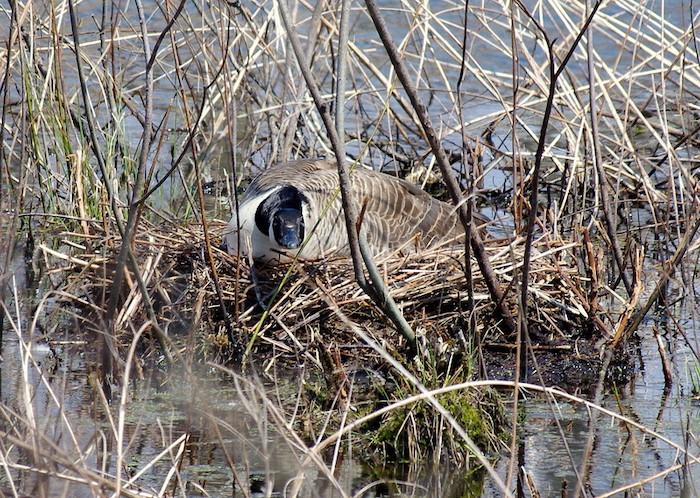
Canada Goose On Nest
Goslings are precocial, which means they can swim, walk and feed as soon as they hatch. They are led to the water where they find grasses, tender herbs and even water insects the day after they hatch. Canada Geese are excellent parents. One adult swims in front and the other behind with a straight line of goslings between them. Both adults guard while the young feed, and when feeding is done, it’s the same routine: one parent in front and one behind with the offspring in a straight line between them. Ducklings only have the female to guard them and baby ducks tend to swim and feed helter-skelter, making them much more vulnerable to predators. Female ducks often lose many of their little ones, while geese rarely lose even one gosling.
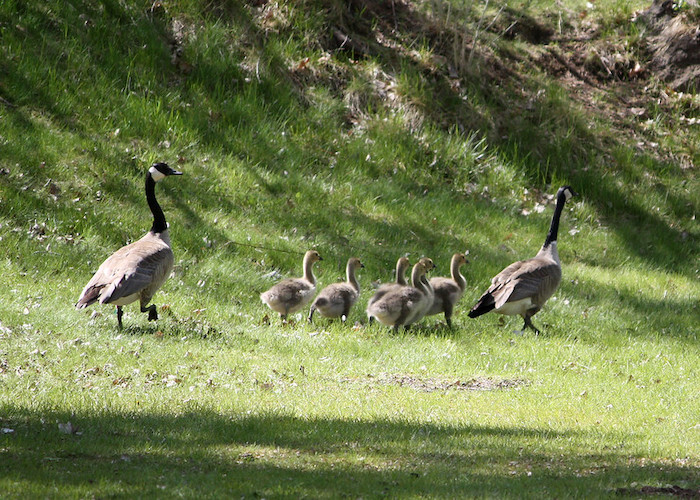
Canada Geese with Goslings
Canada geese form strong bonds within their family unit which includes the adult pair and all of the goslings, who seem to imprint on their parents as well as all their siblings. Groups of five to twelve flying in their “V” formations are likely to be a family group from the previous year. Young geese usually do not breed until they are 2 to 4 years old.
Mated pairs of Canada Geese can be together as long as 20 years but usually find new mates if one of them dies. Last year a devoted pair of geese nested and raised five goslings on the edge of the Sacramento River just below this reporter’s house. The male guarded them fiercely, so the family prospered and all five fledged. The original pair returned the following year, but unfortunately something happened to the female, so she couldn’t fly or swim. Eventually she disappeared, likely the victim of some predator.
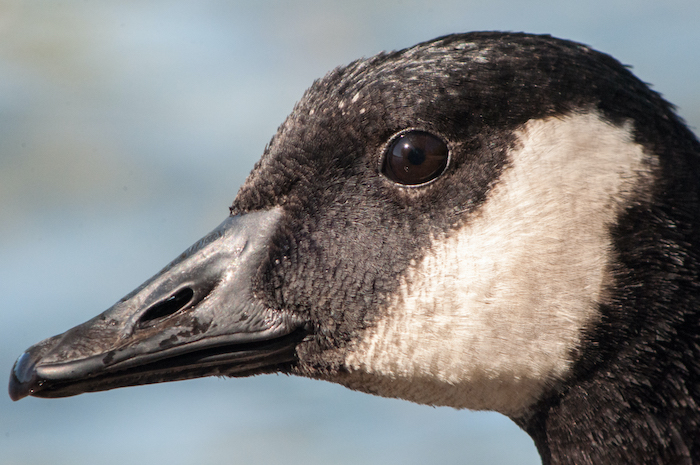
Canada Goose Portrait
The lonesome gander remained close to where she had been for about a week. He then joined a small flock of other geese and flew away with them. However, he returned after just 10 minutes. Another lone goose came and stayed with him for a few days and then they flew off but after about an hour he was back. This sort of thing happened repeatedly for several weeks. It was well over a month before he left for good.
Now we have a new pair of Canada Geese checking out the same nesting area. It may be our faithful lonesome goose returning with a new mate. Neither bird is banded, and they look identical. Guess we’ll never know, but we wish them luck and success.

No comments yet.